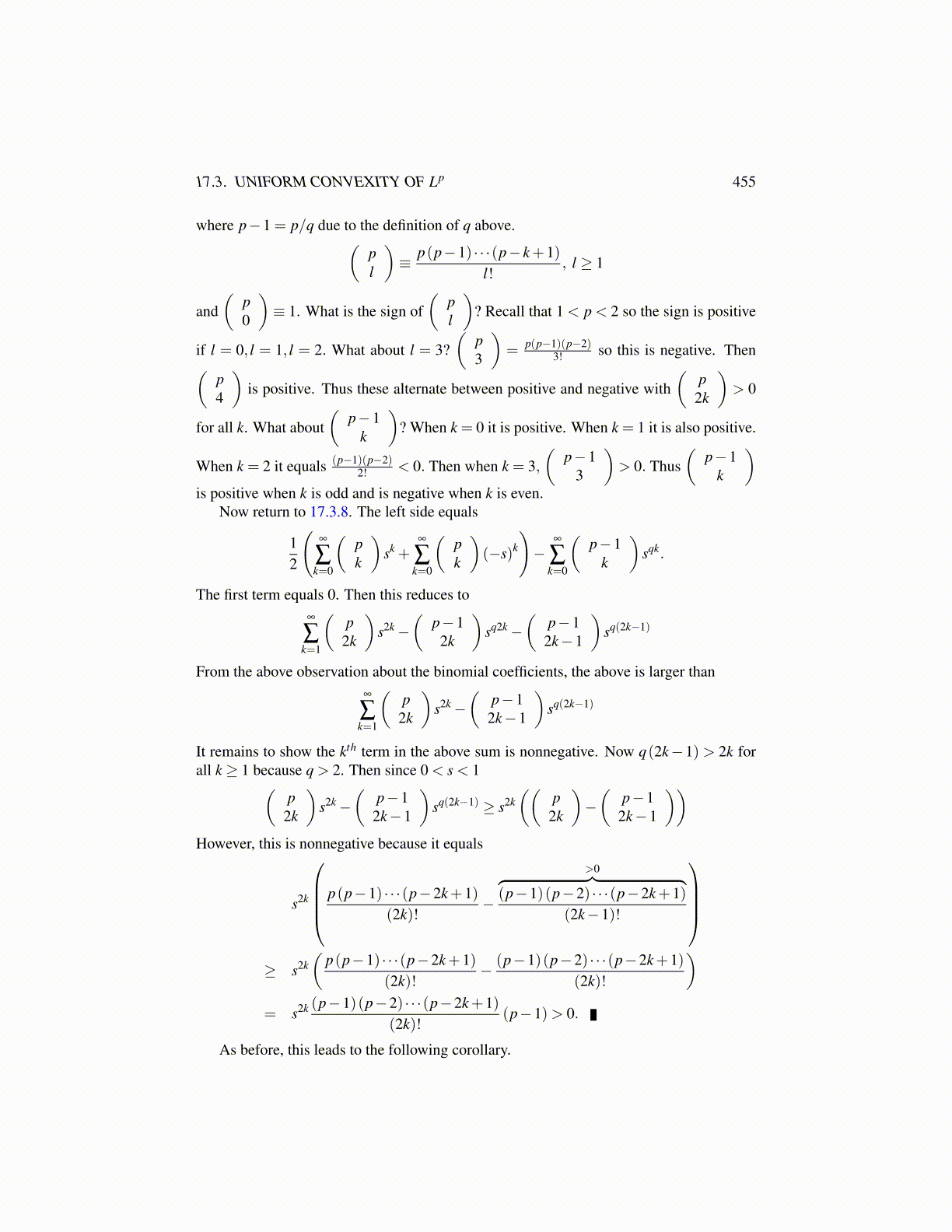
17.3. UNIFORM CONVEXITY OF Lp 455
where p−1 = p/q due to the definition of q above.(pl
)≡ p(p−1) · · ·(p− k+1)
l!, l ≥ 1
and(
p0
)≡ 1. What is the sign of
(pl
)? Recall that 1 < p < 2 so the sign is positive
if l = 0, l = 1, l = 2. What about l = 3?(
p3
)= p(p−1)(p−2)
3! so this is negative. Then(p4
)is positive. Thus these alternate between positive and negative with
(p
2k
)> 0
for all k. What about(
p−1k
)? When k = 0 it is positive. When k = 1 it is also positive.
When k = 2 it equals (p−1)(p−2)2! < 0. Then when k = 3,
(p−1
3
)> 0. Thus
(p−1
k
)is positive when k is odd and is negative when k is even.
Now return to 17.3.8. The left side equals
12
(∞
∑k=0
(pk
)sk +
∞
∑k=0
(pk
)(−s)k
)−
∞
∑k=0
(p−1
k
)sqk.
The first term equals 0. Then this reduces to∞
∑k=1
(p
2k
)s2k−
(p−1
2k
)sq2k−
(p−1
2k−1
)sq(2k−1)
From the above observation about the binomial coefficients, the above is larger than∞
∑k=1
(p
2k
)s2k−
(p−1
2k−1
)sq(2k−1)
It remains to show the kth term in the above sum is nonnegative. Now q(2k−1) > 2k forall k ≥ 1 because q > 2. Then since 0 < s < 1(
p2k
)s2k−
(p−1
2k−1
)sq(2k−1) ≥ s2k
((p
2k
)−(
p−12k−1
))However, this is nonnegative because it equals
s2k
p(p−1) · · ·(p−2k+1)(2k)!
−
>0︷ ︸︸ ︷(p−1)(p−2) · · ·(p−2k+1)
(2k−1)!
≥ s2k
(p(p−1) · · ·(p−2k+1)
(2k)!− (p−1)(p−2) · · ·(p−2k+1)
(2k)!
)= s2k (p−1)(p−2) · · ·(p−2k+1)
(2k)!(p−1)> 0.
As before, this leads to the following corollary.